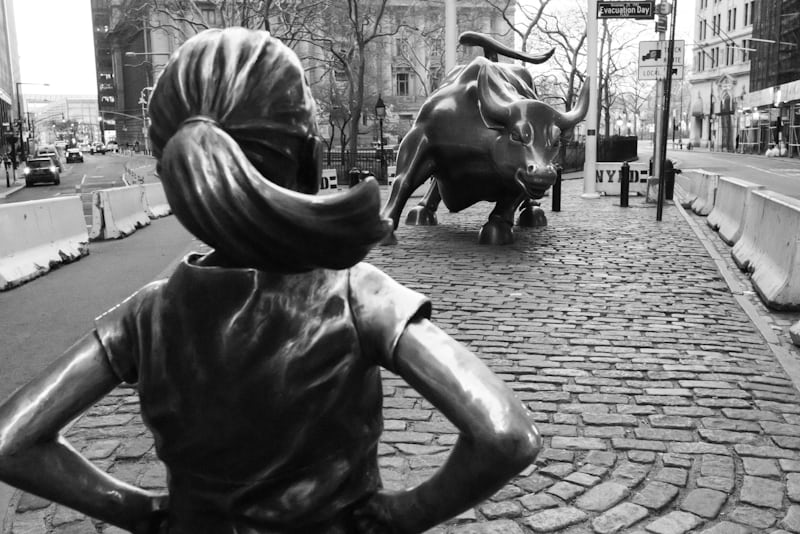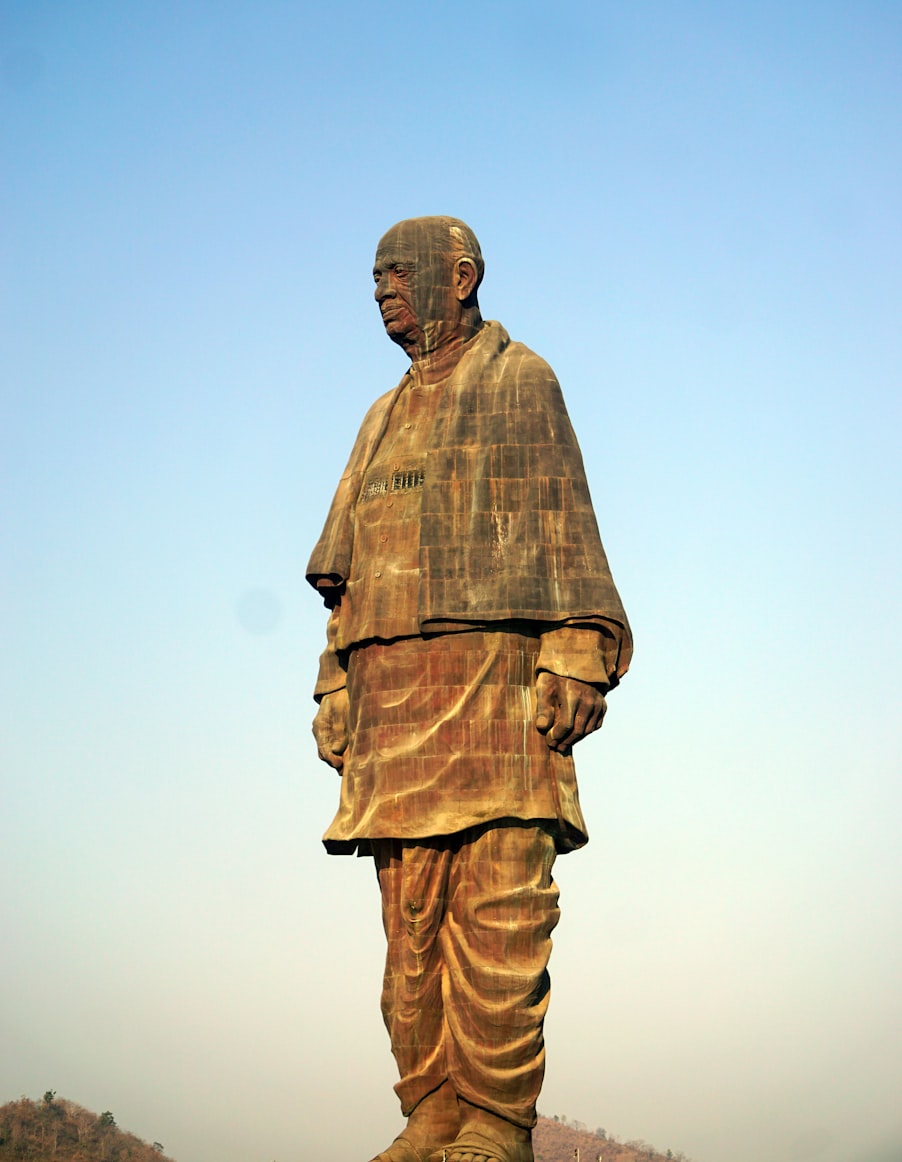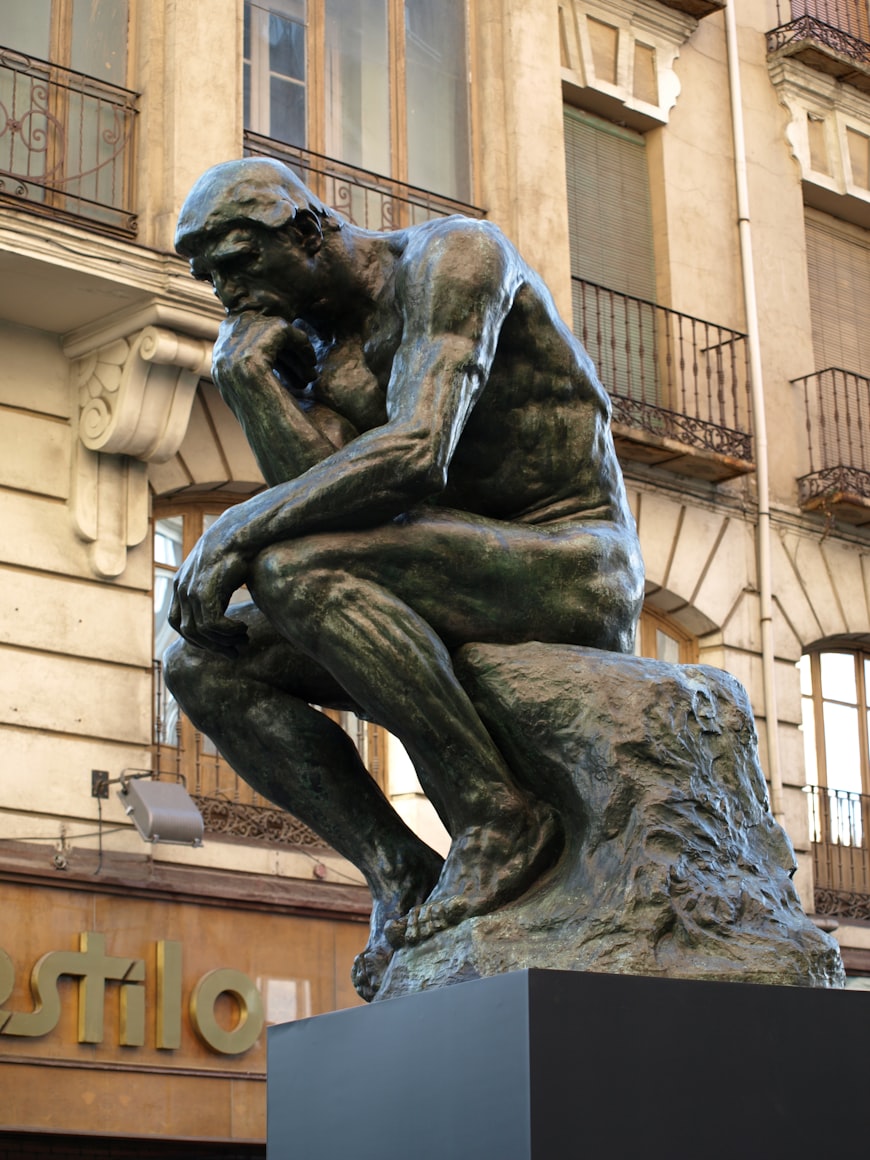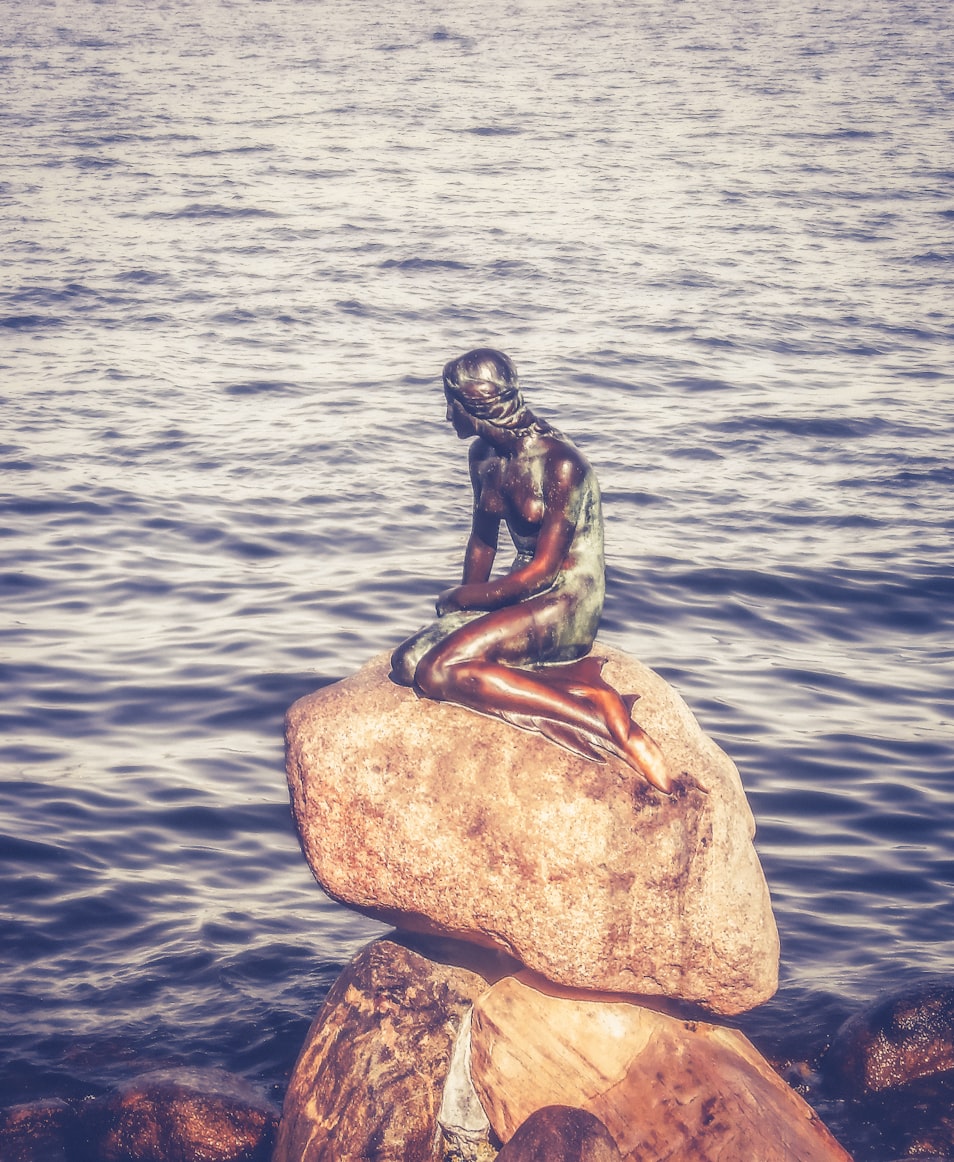Introduction
(Charging Bull and Fearless Girl Sculpture in New York)
Bronze sculptures are some of the most iconic and enduring works of art in the world. They can be found in museums, parks, and private collections all over the globe. From the ancient Greek and Roman eras to the present day, small and large bronze sculptures have been used to celebrate heroes, commemorate historical events, and simply bring beauty to our surroundings
Let’s explore some of the most famous bronze sculptures in the world. We will discuss their history, their creators, and their significance. We will also take a look at the market for bronze sculptures, and where you can find bronze statues for sale.
So whether you are a fan of art history or simply appreciate the beauty of a well-crafted bronze sculpture, this article is for you.
The Statue of Unity
The Statue of Unity in Gujarat, India, is an awe-inspiring bronze marvel and the world’s tallest statue, standing at 182 meters (597 feet). Paying homage to Sardar Vallabhbhai Patel, a key figure in India’s independence movement, it showcases remarkable craftsmanship.
Weighing a staggering 2,200 tons, equivalent to about 5 jumbo jets, it reflects the statue’s grandeur and engineering prowess. The production cost of this monumental bronze statue reached approximately 2,989 crore Indian rupees (around 400 million US dollars), emphasizing the government’s commitment to honoring Patel’s legacy.
The construction, taking four years to complete, culminated in its public unveiling on October 31, 2018, coinciding with Patel’s 143rd birth anniversary. The Statue of Unity stands as a symbol of unity, strength, and the enduring spirit of India, drawing millions of visitors as a cultural and historical landmark.
While the Original Statue of Unity is not an available bronze statue for sale, it remains a significant cultural and historical monument that draws visitors from around the world. Its towering presence, intricate design, and fascinating facts make it a remarkable tribute to a revered leader and an architectural wonder worth experiencing firsthand.
L’Homme Au Doigt

(Pointing Man)
L’Homme au doigt, created by Swiss artist Alberto Giacometti, is an iconic large bronze sculpture located at the entrance of the Fondation Maeght in Saint-Paul-de-Vence, France.
This bronze artwork stands 3.51 meters (11.5 feet) tall, depicting a slender figure with an outstretched arm pointing forward. Giacometti’s meticulous craftsmanship and exploration of existential themes are evident in the elongated proportions of the sculpture.
Despite its appearance, the sculpture weighs approximately 230 kilograms (507 pounds), showcasing both durability and visual impact. While the exact production cost remains unknown, Giacometti’s works have commanded substantial prices in the art market, with “L’Homme au Doigt” setting a record in 2015 as the most expensive sculpture sold at auction for $141.3 million.
With its cultural and artistic significance, the sculpture continues to inspire and captivate visitors, inviting contemplation and reflection.
The Thinker
“The Thinker,” or “Le Penseur” in French, is an iconic sculpture by Auguste Rodin, displayed in various locations worldwide, including the Musée Rodin in Paris. This masterpiece depicts a seated figure immersed in contemplation, known for its intricate detailing and capturing the intensity of human thought.
Rodin dedicated several years to the labor-intensive production of “The Thinker,” showcasing his commitment to artistry. While specific production costs are unavailable, the sculpture’s meticulous craftsmanship suggests a significant investment.
Different casts of “The Thinker” have been sold at varying prices. In 2010, a bronze cast fetched approximately $15.3 million at auction, underscoring its immense value in the art market.
Symbolizing the power of contemplation and intellectual pursuit, “The Thinker” carries immense cultural and artistic significance. It continues to inspire audiences globally, inviting personal interpretations and reflections on the human condition. Encounter with this sculpture prompts engagement with its profound symbolism, standing as a testament to Rodin’s artistic genius and enduring as a symbol of introspection and the quest for knowledge.
Bronco Buster

(Broncho Buster by Frederic Remington)
The “Bronco Buster” is an iconic sculpture by American artist Frederic Remington, celebrated for its portrayal of the American West. This masterpiece can be found in various global locations, such as museums, galleries, and public spaces.
Depicting a cowboy bravely riding a bucking bronco, the “Bronco Buster” captures the raw energy and adventurous spirit of the frontier era. Standing at approximately 73 centimeters (28.7 inches) in height and weighing around 70 kilograms (154 pounds), the sculpture exemplifies Remington’s meticulous attention to detail and mastery of bronze sculpting.
The creation of the “Bronco Buster” involved an intricate and skillful process, demanding significant expertise and resources. Although specific cost details are unavailable, the sculpture’s lifelike quality implies a substantial investment in both time and materials.
Remington dedicated extensive effort to perfecting his sculptures, often spending weeks or months on individual pieces to ensure authenticity and excellence. While the exact duration of the “Bronco Buster” remains unspecified, it is evident that Remington’s commitment to quality shone through his artistry.
coWith its profound cultural and historical significance, the “Bronco Buster” symbolizes the rugged spirit and audacity of the American West. It has emerged as an enduring emblem of the frontier era, captivating art enthusiasts and history enthusiasts alike.ntent
Encountering the “Bronco Buster” in museums, galleries, or public spaces offers a captivating glimpse into the mesmerizing realm of the American West. It’s a lifelike representation and powerful composition that encourages viewers to connect with the cowboy’s spirit and the untamed energy of the bronco, paying tribute to the rich heritage of the Western frontier.
Boxer at Rest

“Boxer at Rest,” also known as “The Terme Boxer” or “The Seated Boxer,” is an iconic ancient Greek sculpture that showcases the artistry and skill of the Hellenistic period. This remarkable artwork is currently housed in the Museo Nazionale Romano in Rome, Italy.
The sculpture depicts a weary and battered boxer in a seated position, capturing the physical and emotional toll of the sport. Standing at approximately 131 centimeters (51.6 inches) in height, “Boxer at Rest” is made of bronze and weighs around 180 kilograms (397 pounds), exemplifying the mastery of sculpture during that time.
The production of “Boxer at Rest” required meticulous craftsmanship and attention to detail. While the exact time taken to create this masterpiece is unknown, it is evident that it demanded significant skill and effort to capture the boxer’s realistic anatomy and emotional expression.
Regarding the cost of production, specific details are not readily available due to its ancient origins. However, recreating such a complex and detailed sculpture would have required substantial resources and expertise.
In terms of its sale price, as an ancient artifact, “Boxer at Rest” is not available for sale in the traditional sense. Its historical and cultural significance make it a priceless piece of art, preserving the legacy and artistic achievements of the Hellenistic period. However, Replicas are available for sale at The Marbleism House.
“Boxer at Rest” serves as a testament to the exceptional talent and artistry of ancient Greek sculptors. Its portrayal of the boxer’s exhaustion and contemplative pose evokes a sense of empathy and admiration for the human spirit.
Encountering “Boxer at Rest” at the Museo Nazionale Romano offers visitors a glimpse into the artistic brilliance of ancient Greece. It’s lifelike representation and emotional depth continue to captivate art enthusiasts and historians, preserving the legacy of ancient Greek sculpture for generations to come.
Little mermaid
“The Little Mermaid” is a beloved bronze statue located in Copenhagen, Denmark, at the Langelinie promenade. This iconic sculpture, based on Hans Christian Andersen’s fairy tale, has become a symbol of the city and a popular tourist attraction.
Standing at a height of 1.25 meters (4.1 feet) and weighing approximately 175 kilograms (385 pounds), “The Little Mermaid” depicts a mermaid sitting on a rock, gazing wistfully out to sea. The statue’s delicate features and graceful pose capture the enchanting spirit of Andersen’s tale.
The production of “The Little Mermaid” was a collaborative effort. Sculptor Edvard Eriksen created the statue based on a design by Edvard’s wife, Eline Eriksen. The sculpture was unveiled on August 23, 1913, after approximately two years of work.
contThe cost of production for “The Little Mermaid” is not readily available. However, it is known that the statue was funded by Carl Jacobsen, the founder of the Carlsberg Breweries, as a gift to the city of Copenhagen.ent
In terms of the sale price, “The Little Mermaid” is not intended for sale. It is a public artwork that belongs to the city and its citizens. Its cultural significance and connection to Danish heritage make it an invaluable symbol rather than an object for commercial transactions.
“The Little Mermaid” has faced numerous challenges over the years, including vandalism and attempts to remove or damage the statue. Nevertheless, it has endured and continues to attract visitors from around the world who come to admire its beauty and immerse themselves in the fairy tale atmosphere
Encountering “The Little Mermaid” at the Langelinie promenade offers a chance to be enchanted by the magic of Andersen’s story. The statue’s timeless appeal and its connection to Danish literature and culture make it a cherished and enduring icon that captures the imagination of all who visit.
The Bronze Horseman

The Bronze Horseman Monument, also known as the equestrian statue of Peter the Great, is a magnificent sculpture located in St. Petersburg, Russia. It is situated at Senate Square, a historic and prominent square in the city.
The monument features a larger-than-life-sized bronze statue of Peter the Great mounted on a rearing horse. Standing at an impressive height of 6.75 meters (22.1 feet), the statue captures the powerful presence and determination of the Russian tsar.
Weighing around 20 tons, the Bronze Horseman Monument is an engineering marvel. It required immense skill and expertise to create such a monumental sculpture, and the use of bronze as the primary material adds to its grandeur and durability
The production of the monument was a lengthy and meticulous process. French sculptor Étienne Maurice Falconet was commissioned to create the statue, and it took him over 12 years to complete. The monument was unveiled in 1782, becoming one of the most iconic symbols of St. Petersburg.
While the exact cost of production is not readily available, it is known that the construction of the monument was financed by Catherine the Great, who was a patron of the arts and a strong supporter of Peter the Great’s legacy.
The Bronze Horseman Monument holds immense historical and cultural significance in Russia. It represents the pioneering spirit of Peter the Great, who played a pivotal role in the transformation and modernization of the country. The statue has become a symbol of the city and an enduring tribute to one of Russia’s most influential leaders.
Visiting the Bronze Horseman Monument allows visitors to appreciate its majestic presence and admire the skillful craftsmanship involved in its creation. As an iconic landmark in St. Petersburg, it continues to inspire awe and reverence, showcasing the rich history and artistic heritage of Russia.
Post time: Aug-07-2023




